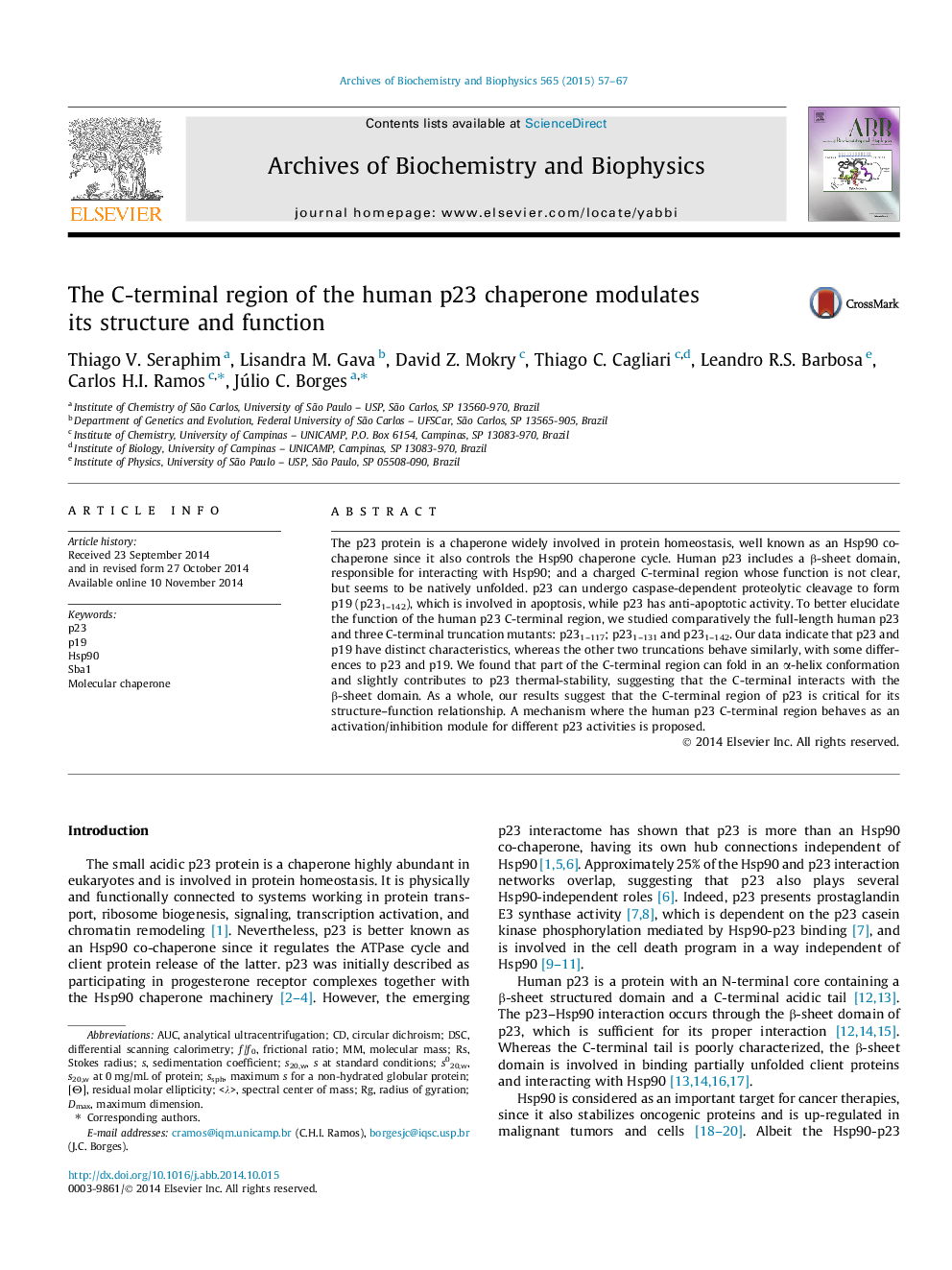| Article ID | Journal | Published Year | Pages | File Type |
|---|---|---|---|---|
| 1925065 | Archives of Biochemistry and Biophysics | 2015 | 11 Pages |
•The p23 protein is a chaperone widely involved in protein homeostasis.•The p23 C-terminal tail, which function is not clear, seems to be natively unfolded.•The structure–function of human p23 and C-terminal truncation mutants was studied.•The p23 C-terminal region slightly contributes the protein’s thermal-stability.•Our results suggest that the p23 C-terminus is critical for its structure–function.
The p23 protein is a chaperone widely involved in protein homeostasis, well known as an Hsp90 co-chaperone since it also controls the Hsp90 chaperone cycle. Human p23 includes a β-sheet domain, responsible for interacting with Hsp90; and a charged C-terminal region whose function is not clear, but seems to be natively unfolded. p23 can undergo caspase-dependent proteolytic cleavage to form p19 (p231–142), which is involved in apoptosis, while p23 has anti-apoptotic activity. To better elucidate the function of the human p23 C-terminal region, we studied comparatively the full-length human p23 and three C-terminal truncation mutants: p231–117; p231–131 and p231–142. Our data indicate that p23 and p19 have distinct characteristics, whereas the other two truncations behave similarly, with some differences to p23 and p19. We found that part of the C-terminal region can fold in an α-helix conformation and slightly contributes to p23 thermal-stability, suggesting that the C-terminal interacts with the β-sheet domain. As a whole, our results suggest that the C-terminal region of p23 is critical for its structure–function relationship. A mechanism where the human p23 C-terminal region behaves as an activation/inhibition module for different p23 activities is proposed.
Graphical abstractFigure optionsDownload full-size imageDownload high-quality image (136 K)Download as PowerPoint slide
